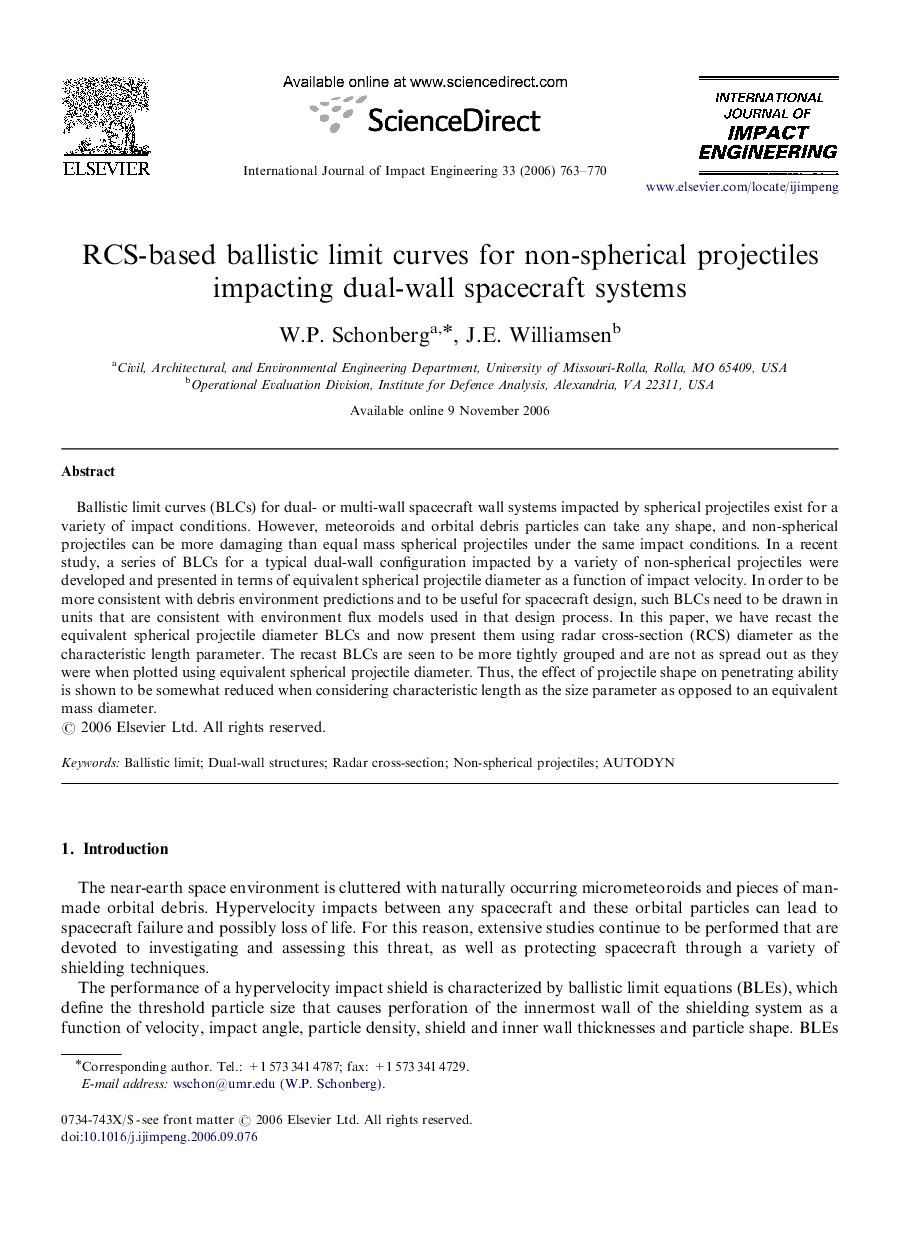| Article ID | Journal | Published Year | Pages | File Type |
|---|---|---|---|---|
| 779641 | International Journal of Impact Engineering | 2006 | 8 Pages |
Ballistic limit curves (BLCs) for dual- or multi-wall spacecraft wall systems impacted by spherical projectiles exist for a variety of impact conditions. However, meteoroids and orbital debris particles can take any shape, and non-spherical projectiles can be more damaging than equal mass spherical projectiles under the same impact conditions. In a recent study, a series of BLCs for a typical dual-wall configuration impacted by a variety of non-spherical projectiles were developed and presented in terms of equivalent spherical projectile diameter as a function of impact velocity. In order to be more consistent with debris environment predictions and to be useful for spacecraft design, such BLCs need to be drawn in units that are consistent with environment flux models used in that design process. In this paper, we have recast the equivalent spherical projectile diameter BLCs and now present them using radar cross-section (RCS) diameter as the characteristic length parameter. The recast BLCs are seen to be more tightly grouped and are not as spread out as they were when plotted using equivalent spherical projectile diameter. Thus, the effect of projectile shape on penetrating ability is shown to be somewhat reduced when considering characteristic length as the size parameter as opposed to an equivalent mass diameter.
